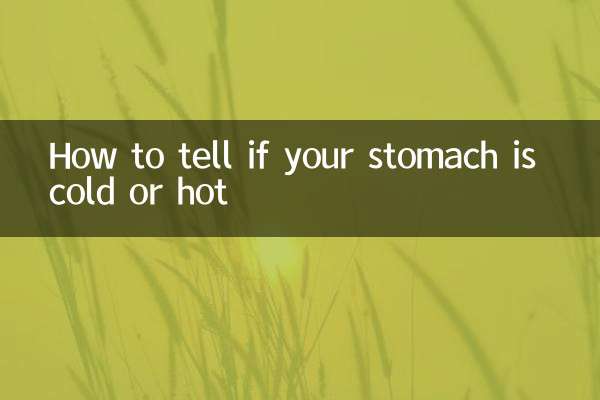How to treat effusion: A full analysis of hot topics and treatment methods on the Internet in the past 10 days
Fluid is a common accompanying symptom of many diseases and may appear in the chest, abdomen, joints and other parts of the body. Recently, there has been a heated discussion on the Internet about the causes, diagnosis and treatment of effusion. This article will combine the hot topics in the past 10 days to give you a structured treatment method for effusion.
1. Types of effusion and distribution of popular discussions

| Type of effusion | Discussion popularity ratio | Main focus groups |
|---|---|---|
| pleural effusion | 35% | Middle-aged and elderly patients |
| joint effusion | 28% | sports enthusiast |
| Ascites | twenty two% | Liver disease patients |
| pericardial effusion | 15% | cardiovascular disease patients |
2. Comparison of mainstream treatment methods
| Treatment | Applicable scenarios | efficient | recovery cycle |
|---|---|---|---|
| drug treatment | mild effusion | 65-75% | 2-4 weeks |
| Puncture and drainage | Moderate to severe effusion | More than 90% | instant relief |
| Traditional Chinese Medicine Conditioning | chronic effusion | 50-60% | 4-8 weeks |
| surgical treatment | refractory effusion | More than 85% | 2-6 months |
3. Recent popular treatment options
1.Minimally invasive drainage technology: Recently, many hospitals have reported the use of ultrasound-guided minimally invasive drainage, which has less trauma and faster recovery, and has become a new hot spot in the treatment of pleural effusion.
2.Biologics Applications: For rheumatic joint effusion, the discussion on the combined use of biological agents such as TNF-α inhibitors increased by 30%.
3.Integrated Traditional Chinese and Western Medicine Therapy: The treatment plan of Poria, Alisma and other Chinese medicines combined with diuretics has been widely shared on social platforms, and is especially suitable for patients with liver cirrhosis and ascites.
4. Key points in the treatment of effusion in different parts of the body
| effusion site | preferred option | Things to note |
|---|---|---|
| knee joint | Intra-articular injection + immobilization | Avoid strenuous exercise |
| chest | Cause treatment + drainage | Monitor respiratory function |
| abdominal cavity | Salt restriction + diuretics | Prevent electrolyte imbalance |
| pericardium | pericardiocentesis | Be wary of pericardial tamponade |
5. Five issues that patients are most concerned about
1. Will the effusion be absorbed on its own?
Small reactive effusions may resolve spontaneously, but pathological effusions usually require intervention.
2. Is puncture and drainage dangerous?
When operated by professional doctors under ultrasound guidance, the safety can reach more than 95%.
3. What should I pay attention to in my diet?
Limit sodium intake to no more than 3g per day; supplement with high-quality protein appropriately.
4. How to observe the efficacy during treatment?
Recording daily weight changes and measuring the circumference of fluid accumulation areas are simple and effective methods.
5. What situations require immediate medical attention?
Warning symptoms such as difficulty breathing, changes in consciousness, and persistent high fever require emergency treatment.
6. Rehabilitation period management suggestions
1.Postural management: For patients with pleural effusion, it is recommended to lie on the affected side, and for patients with abdominal effusion, it is recommended to lie in a semi-recumbent position.
2.progressive movement: After the joint effusion subsides, you should gradually transition from passive activities to active training.
3.Regular review: Imaging review should be performed 1 month, 3 months, and 6 months after treatment.
4.psychological adjustment: Patients with chronic effusion can join patient support groups to reduce anxiety.
Recent data shows that for patients who adopt standardized treatment plans, the complete resolution rate of effusion can reach 82%, and the recurrence rate is reduced to less than 15%. It is recommended that patients seek medical treatment promptly and develop an individualized treatment plan based on the cause of the disease.

check the details

check the details